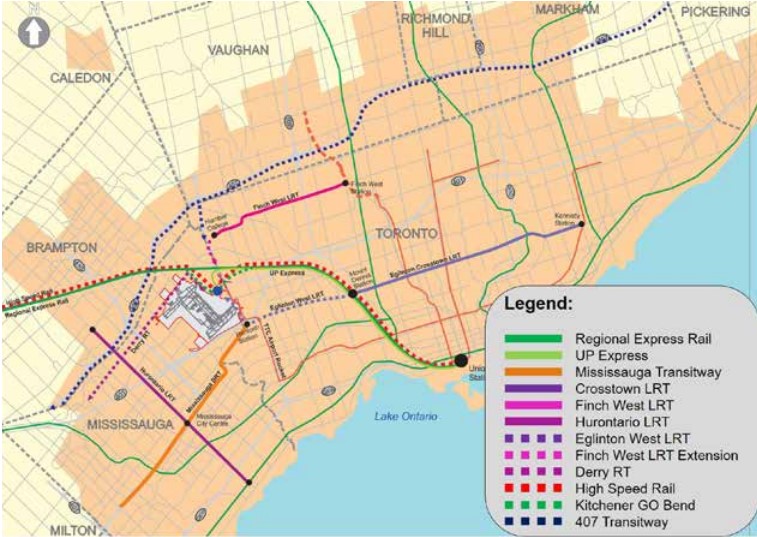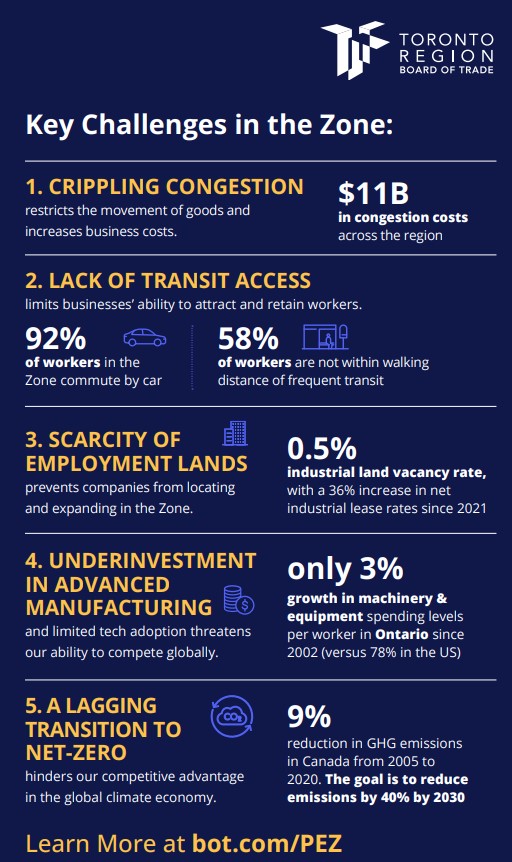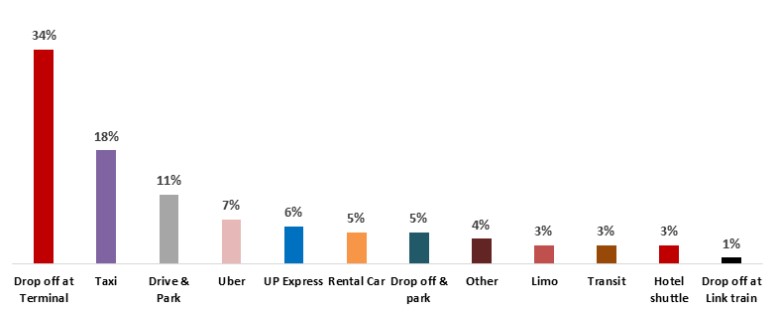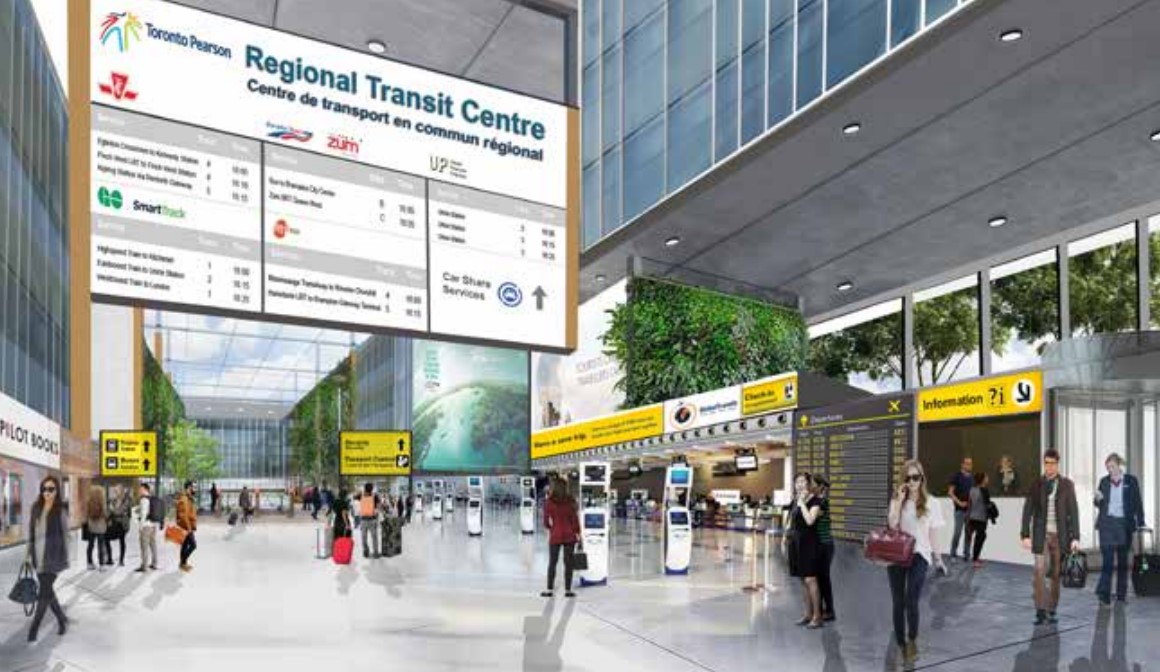Toronto Pearson Airport and the economic zone it creates is in trouble. Thanks to regional population growth, roadside and airside congestion at the airport is expected to become commonplace. The mayhem of long line ups, delays, and staff shortages observed during the Christmas travel timeframe of 2022 will become a weekly event.
Along with soaring emissions from jets idling in queue for takeoff or on the ramp waiting for a gate, there will be a never-ending traffic jam on roads in and around the airport. Many of those cars and trucks will have driven hours on regional highways just to get to Toronto’s only jet airport. Even with new aviation infrastructure in Pickering and other regions, gridlock appears certain within a decade.
Can anything be done?
A fundamental principle of any argument dealing with airport capacity in the GTHA (Greater Toronto and Hamilton Area) is that airports achieve their masterplans. These airports, including a Pickering airport, must achieve their masterplan volumes when they say they will (as may be adjusted by COVID impacts). Right now, Pearson’s masterplan is funded to a capacity of 65 million passengers. IN 2019 Pearson handled 50.5 million passengers and demand is expected to growth by 3-4% a year. The proposal to increase Pearsons Airports passenger capacity to 85 million by building out transit infrastructure remains unfunded.
The capital costs for Union West station, HFR (High Frequency Rail), a 407 Transitway and TTC connections to Pearson could exceed $30 Billion. This transit infrastructure will take decades to build.

One possible solution to help fund these transit links is a new green fee. A fee applied to air tickets on air travelers who don’t use mass transit to get to Pearson airport.
 In 2019, nine out of ten workers and passengers in this area traveled by car to the Pearson Economic Zone (PEZ). The PEZ is the top generator of car trips in the entire Greater Golden Horseshoe. By 2037, the Greater Toronto Airports Authority (GTAA) estimates that Pearson Airport must be able to handle 85 million passengers annually even with the opening of a new airport in Pickering. That is an increase of 20 million over and above its current maximum of 65 million passenger capacity as outlined in its master plan. With 2019 passengers number hitting 50.5 million and a compound growth of 3-4% a year forecast from 2024 onward, Pearson will hit its 65 million cap by 2030. After that, gridlock mayhem both at the airport and inside the economic zone. A zone many times the size of downtown Toronto that is an economic engine creating 6% of Ontario’s GDP.
In 2019, nine out of ten workers and passengers in this area traveled by car to the Pearson Economic Zone (PEZ). The PEZ is the top generator of car trips in the entire Greater Golden Horseshoe. By 2037, the Greater Toronto Airports Authority (GTAA) estimates that Pearson Airport must be able to handle 85 million passengers annually even with the opening of a new airport in Pickering. That is an increase of 20 million over and above its current maximum of 65 million passenger capacity as outlined in its master plan. With 2019 passengers number hitting 50.5 million and a compound growth of 3-4% a year forecast from 2024 onward, Pearson will hit its 65 million cap by 2030. After that, gridlock mayhem both at the airport and inside the economic zone. A zone many times the size of downtown Toronto that is an economic engine creating 6% of Ontario’s GDP.
Rush hour congestion on regional roadway and highway infrastructure is already severe. The Toronto Board of trade estimates that this congestions costs $11 Billion dollars a year in reduced productivity. This congestion blocks the movement of goods, employees and air passengers. It increases GHG (Green House Gas) emissions, making it impossible to achieve the regions target of a 40% GHG reduction by 2030.
The only possible solution is a radical change in the use of public transit enabled by building new transit connectivity. The GTAA needs to increase the number of passengers entering and departing the PEZ from the low-teens percentage to as much as 30 to 40 percent! Any onsite airport infrastructure improvements are tight but manageable if funded, the block is getting passengers to and from the airport.

Compounding this one big traffic jam are the traffic loads of trips by other commercial vehicles inside the PEZ and throughout the GTA (Greater Toronto Area). As a result, the GTA’s major highways in the PEZ, already the most congested in Canada, are facing grid lock in the next decade. Diverting passenger traffic and economic growth to a new Pickering Airport economic zone and other regions, including Waterloo and Hamilton will help.
A shift in travel behaviors must be induced and encouraged.
The proposed Pearson Regional Transit Centre, sometimes referred to as Union Station West, can help cut through the congestion by integrating several existing and planned transit lines into a new multimodal transportation system.

Union West would need to be similar in size and scope to Toronto’s Union Station. It will need to provide a passenger interchange for the TTC, GO Regional Express Rail and UP Express. It must enable transit connections to the Eglinton Crosstown LRT, 407 Transit Way, Finch West LRT and Mississauga Bus Rapid Transit.
Paired with a future “Union North”, the new transit center proposed for North Pickering, and the existing downtown Toronto Union station, a new cross-region integrated transit system could ease the gridlock on roads and enable an increase in Pearson passenger aviation capacity.
The Province of Ontario has announced an amazing $100 billion in new transit infrastructure funding over the next 10 years. Although the greatest transit investment in the province’s history, it is still spread thin and does not cover construction of key GTAA Master Plan elements for a Union West. Another source of funding must be found.
One possible approach would be a reverse P3 (Public Private Partnership) where the GTAA funds 25% of new transit with a go green fee.
The solution suggested is to apply a large green fee to the existing Pearson AIF (Airport Improvement Fee) and then offer a rebate to green travelers. Adding a green fee to the existing AIF enables the targeting of passengers utilizing Pearson airport but living in other regions. Passengers who show proof of traveling to the airport on mass transit on the day of departure, or who live within 30 km of Pearson airport could get a rebate. This would both incentivize green consumer travel behavior and generate revenue for the GTAA (Greater Toronto Airports Authority).
Green fee Revenue could be used to finance the tens of Billions of Dollars needed to construct the Union West transit hub on land already purchased by the GTAA. A green fee could also encourage travelers to use other locally accessible transportation options in other regions instead of driving to a distant Pearson Airport. This could include funding High Frequency Rail and locally accessible aviation capacity in other regions.
A $20 increase based on half of the 65 million travelers expected to use Pearson airport in 2030 would raise at least $650 million dollars a year. This fee could be grandfathered in for a 20-year period. Money that the GTAA could use to cover the borrowing costs for the Tens of Billions of Dollars in capital needed to build a new transit hub and transit links at the airport.
Without the transit hub at Pearson, 65 million passengers is the probable limit the existing airport master plan might be able to handle without faltering into gridlock. The federal government has made it clear to the GTAA that they are on their own.
The planet is on fire. It is time to get moving on building new transit, rail and locally accessible net zero airport capacity.
References:
Airport Improvement Fees | Pearson Airport (torontopearson.com)
Fast Facts about Toronto Pearson Airport | Pearson Airport
Pearson Regional Transit Centre – Wikipedia
Toronto Pearson International Airport – Master Plan 2017-2037, Section 8: Public Transit and Regional Transit Centre – Future Transit Initiatives.
See:
gtaa-master-plan.pdf (torontopearson.com)
Next Stop: Building Universal Transit Access | Toronto Region Board of Trade (bot.com)
Blaine Woodcock …rears his ugly head….again …a bean counter who can’t count beans for beans…check out the Toronto board of trade Who’s who. …last ref above…Debora flint. Too .the flunking flunky. Couldn’t run a tea party in a dolls house. Now we know why she fired Hillary Marshal.
Mark brooks .becomes .the plagiarizing shill for tbot.?
Come on mark ur better than that.
When is the next club meeting…waiting for my invite.,